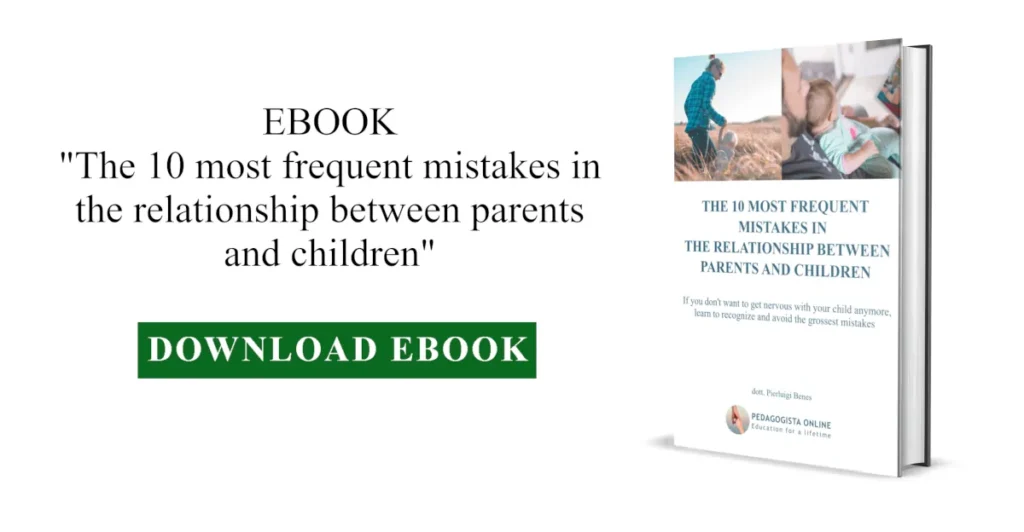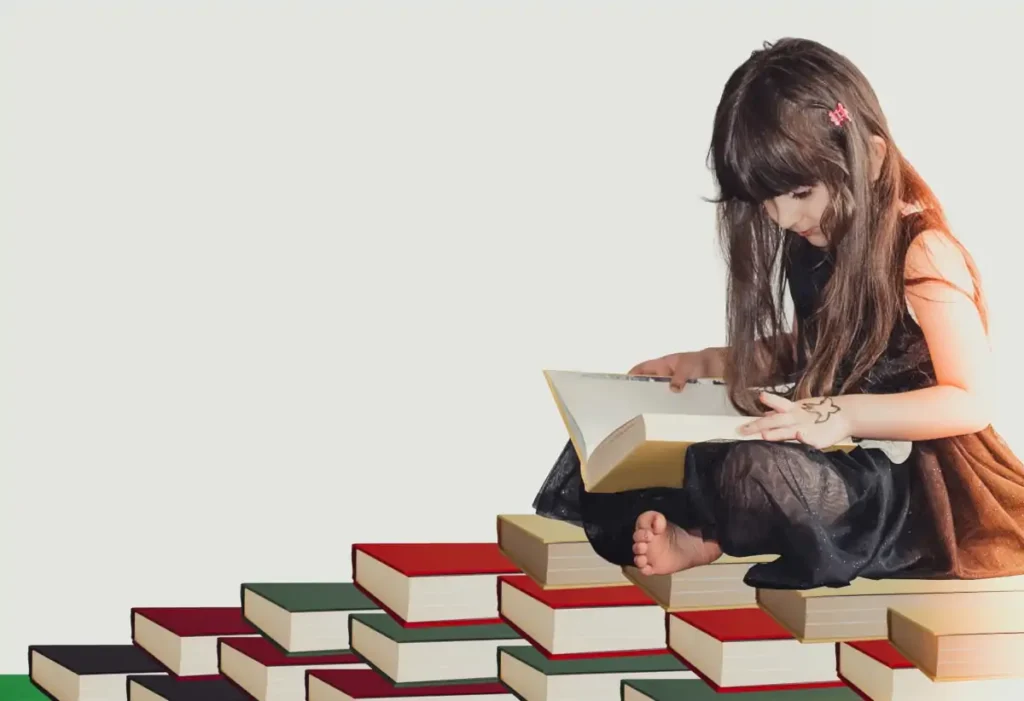Federico is in the second grade, he doesn’t read well, and he’s quite slow. He’s a child with remarkable intuition and many abilities, but reading is a challenging obstacle for him. His writing is also imprecise; he makes several errors and inaccuracies. Additionally, he confuses numbers, so he faces difficulties in performing math operations.
His teachers have suggested that the family seek a medical evaluation for a suspected specific learning disorder. They had already done so at the beginning of the first grade, after only two months of school, but the family preferred to wait. Now the teachers insist again because they notice that the difficulties persist. They say that he is probably dyslexic and, given the effort he is making, it would be helpful for him to access resources available for this kind of problem.
The family has informed about this type of disorder, reading books and seeking information from experts and acquaintances, but they are very confused about the best course of action to help the child. They were told that a dyslexic child inverts letters because they wouldn’t associate the symbol with the correct sound due to a problem called phonological deficit. However, the solutions that have been suggested to them appear quite ambiguous; for example, they don’t understand how sessions of psychomotor activities would be relevant if the cause is a sign-sound association disorder.
Another aspect they are skeptical about is the possibility of being exempted from part of the schoolwork. They consider it a warning sign, an indication of surrender due to the inability to keep up with the program like all the other children, even though everyone agrees that a dyslexic child is intelligent.
In fact, the big question these parents have is: if my child is exempted from reading, how will he learn to read adequately? And then, will he ever be able to do it? How much will he be affected in the future in terms of personal fulfillment?
I want to bring clarity to these issues because I know that if you find yourself in a similar situation, you are suffering a lot and would like to understand what to choose when faced with the crossroads you are in.
Therefore, now relax and know that there are many valid reasons why you shouldn’t worry; I will explain some possible solutions. Follow me!
1. What to do with dyslexia? Let's see how reading works
The first thing you need to understand is how reading works; this will make it clearer for you to comprehend what may be difficult for your child. Reading is a process aimed at acquiring information from written language and occurs on two levels: deciphering and decoding.
In simple terms, while the graphic features are perceived and recognized through eye movement, the mind associates the meaning to those features, allowing it to attribute sense to what has been written.
Another characteristic of reading concerns the pattern of eye movements. In the left-to-right scrolling, the eye makes jumps from one point to another; transitioning from one part of the sentence to another, the mind fixates its attention on certain points to recognize and decode their meaning.
As you will easily realize, it is a highly dynamic process in which various functions intertwine, and all of this happens in an extraordinarily rapid timeframe.
2. What are the possible difficulties of reading?
For the reading process to occur correctly, it is first necessary for all the cognitive structures necessary to make reading possible to have fully matured. Secondly, it is important that the process of learning to read has taken place fully; this usually occurs during the first year of primary school. Finally, a sufficiently extensive reading practice is required to develop a good familiarity with words, thus optimizing their recognition.
These are the essential conditions for reading to be exercised appropriately. However, in some situations, both the learning and practice of reading may encounter difficulties. For example, if the neurological functions involved in this process have not yet fully matured, reading may be more challenging. Therefore, it is necessary to give the child some time to mature.
Secondly, there may be issues that affect learning capabilities: specific disorders (language, attention, symbolization, perception, etc.), concentration problems, coordination difficulties, lack of practice, demotivation, and more.
In many of these cases, there is no specific learning disorder (SLD), but there are other learning difficulties that need to be addressed specifically to overcome reading challenges. In other cases, however, there may be an SLD, but such situations are very rare; much rarer than one might think. In fact, I will now explain why one should not be too hasty.
3. Three good reasons not to be alarmed
As I will clarify in a specific in-depth analysis of dyslexia, we are currently experiencing a situation of extreme alarmism towards learning disorders (SLD). Neuropsychiatrist Michele Zappella uses a very evocative expression for this phenomenon, calling it a “diagnostic epidemic“.
The first thing you need to know is that if there is a suspicion that a child is dyslexic, it is highly likely that they are not. There is a strong focus on this disorder as if it were the biggest problem for children, and this has generated a strong push towards families to obtain a SLD certification.
This push is strong because it also comes from the school; however, despite the fact that the certification greatly facilitates the work of teachers, its effects on the child can be very burdensome.
The second thing that should reassure you is that you are not obliged to accept the certification; if the school pressures you and you do not want your child to be certified, you are free not to do so. Reading is a very complex process, and one of the most important components for its correct learning is precisely the exercise of reading.
If there are difficulties, they can be managed with targeted measures, without necessarily resorting to the measures provided for SLDs (substitutive, dispensatory, etc.), without perceiving a difference in treatment, and without giving up on reading.
The third thing, finally, concerns the fact that if the reading problem should indeed be attributable to a SLD, you will have plenty of time to address it in the future. Various contextual aspects can also contribute to all of this, which can weigh heavily on teaching activities. For example, the class may be too large, or perhaps there are many children with significant difficulties; or again, there may have been recent changes in teachers, and they are dealing with a new school organization that can make their work more challenging.
Therefore, nowadays, if a possible dyslexia is suggested in your child, and if the child’s teachers do not know how to teach them to read without resorting to certification, the first thing you can do is find teachers who can help them do so: outside of school (for example, privately), or at another school.
I mentioned finding other teachers, not therapists. I say this because before considering rehabilitation following a possible certification of a disorder, it is logical to try to strengthen the process of developing reading skills as much as possible. Many times, a little patience and targeted work are sufficient to enable the child to improve the quality of reading and understand what they read sufficiently well.
At this point, let’s also consider that we might be dealing with evident dyslexia; let’s try to understand what it is and how to manage it.
4. What is dyslexia?
Dyslexia is one of the specific learning disorders, often accompanied by dysgraphia and dyscalculia. As indicated in the Professional scientific glossary Hermes (Ed. Junior 2016), the term “learning disorder” is improper because the disorder refers to the exercise of reading rather than its learning process.
This should already help you understand that a child with dyslexia does not have difficulties in learning in general; their difficulty lies in the execution of functions such as reading and writing. These functions are undoubtedly important, but the difference in perspective is significant and avoids generalizations that can make a child feel incapable.
Now let’s give a definition that takes into account this perspective and helps understand the origin of the disorder. In the scientific community, there are various interpretations, although the origin is often attributed to psycho- or neuro-motor theories. In other cases, there are references to improper translations from English literature that lead to a semantic-symbolic disorder in the association between signs and sounds.
Due to such diverse views of the disorder, the possible interventions for children with dyslexia also vary significantly. In many cases, the approaches can be contradictory.
This should help you understand that we are dealing with a phenomenon where there is no full consensus of views, and therefore, every action should be weighed with the utmost caution, both by families, schools, institutions, and lawmakers.
Given the solid literature supporting the motor nature of the disorder, I refer to the definition provided by Professor Piero Crispiani, who speaks of dyslexic syndrome and defines it as sequential dyspraxia. Let me explain immediately what this means using very simple words.
Dyspraxia refers to the disordered execution of executive functions, which involves difficulties in movement. Essentially, individuals with dyspraxia struggle with performing actions in space and time, often exhibiting clumsiness as a characteristic.
Among the various effects, this disorder also manifests in reading and writing, which occur in space and time. Similarly, mathematics, which involves columnar operations, crossing over, transferring, and so on.
Now, I believe you will be able to understand well some of the difficulties your child may be experiencing, for which you haven’t found an answer. This is why teachers feel helpless in the face of a child’s difficulties and, out of desperation, insist on getting the child certified.
That being said, let’s see what can be done.
5. What to do in case of suspected dyslexia?
Of course, it is not possible to cover the entire topic in a few lines; however, what I can do is offer you some simple guidelines on how to approach the situation of suspected dyslexia in the best interest of your child.
a) Keep calm: Based on the information I’ve provided, it is very likely that there is no dyslexia; in fact, in 80% of cases, referral for evaluation is entirely inappropriate. Therefore, be aware that the chances of having to enter your child into the extensive evaluation process for dyslexia are quite low.
b) Don’t give up: There is plenty of time for certification. It is not at all necessary to rush after only two months from the beginning of the first grade when it is possible that the child has not matured sufficiently, and the teaching process for reading and writing is just beginning. Before subjecting the child to a specialist evaluation, which can be quite burdensome, or even acquiescing to certification for a specific learning disorder, you can wait for as long as needed to obtain adequate guarantees for a suitable personalized educational path or, in the most extreme case, a rehabilitative one. Be careful also of the conflict of interest from those who speak to you; many are focused on evaluating the child rather than finding the best way to teach them to read. Moreover, the pressure you receive is often veiled under the pretense of focusing on the child’s struggles. It is evident that they are struggling if they are not taught to read in a way that is most suitable for their unique specificities.
c) Engage in prevention: What I’m explaining now applies to all children, not just in cases where learning disorders are suspected. Given the motor nature of dyslexia and the fact that it is a disorder that stems from dyspraxia, refining the child’s coordination from a very young age is an extremely useful exercise and costs nothing. Climbing, running, jumping, playing cards, talking and moving together, playing in groups, playing musical instruments, etc., are all gestures (or praxis) that enhance the quality of motor coordination in the child.
d) Encourage reading in the most congenial form for the mind, i.e., global reading: Syllabic reading hinders the fluidity of the neuromotor process that leads to reading because it tends to inhibit the second level of the reading process, decoding. You can easily experience this yourself as a normal reader. Just try to read a few lines by syllabifying, and you will notice that at the end of the reading, you struggle to remember what you read. Reading must not only be fast (assuming that syllabification can make it fast), but it must also be fluid and, above all, enable one thing: quick access to the meaning of what is being read (e.g., the concept of HOUSE), without being anchored to the signifiers (e.g., letter H, letter O, etc.). Therefore, once reading is learned, it should be practiced in a way that facilitates the decoding activity of the mind. From this perspective, global reading of words and the greater ability to recognize new words represent extremely advantageous strategies for improving reading.
e) Encourage learning in the child: A child with dyslexia is intelligent and capable of learning, so their abilities cannot be stifled due to some stumbling blocks. Therefore, it is essential to highlight their learning capabilities.
f) Follow some simple didactic recommendations in reading and writing: Here are some of the most effective strategies that parents and teachers can follow to improve the learning experience for the child (Crispiani, 2011):
- Promote grapho-motor practices, such as cursive writing;
- Promote left-to-right directionality in writing;
- Promote fluid execution in all performances;
- Avoid exercises of writing individual letters or syllables and work on whole words;
- Verbalize what needs to be written before writing it;
- Practice dictation progressively, from short to longer passages;
- Avoid merging letters or syllables to encourage predictive reading, i.e., global reading;
- Exercise movement in the line of time;
- Practice narration and summarization on every occasion;
- Etc.












